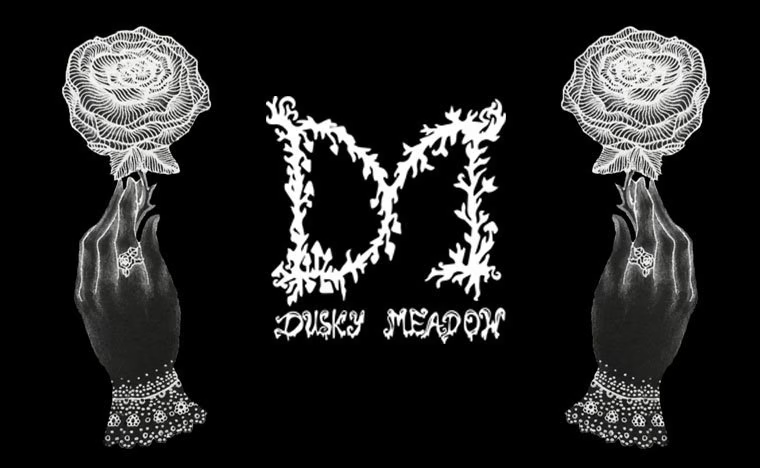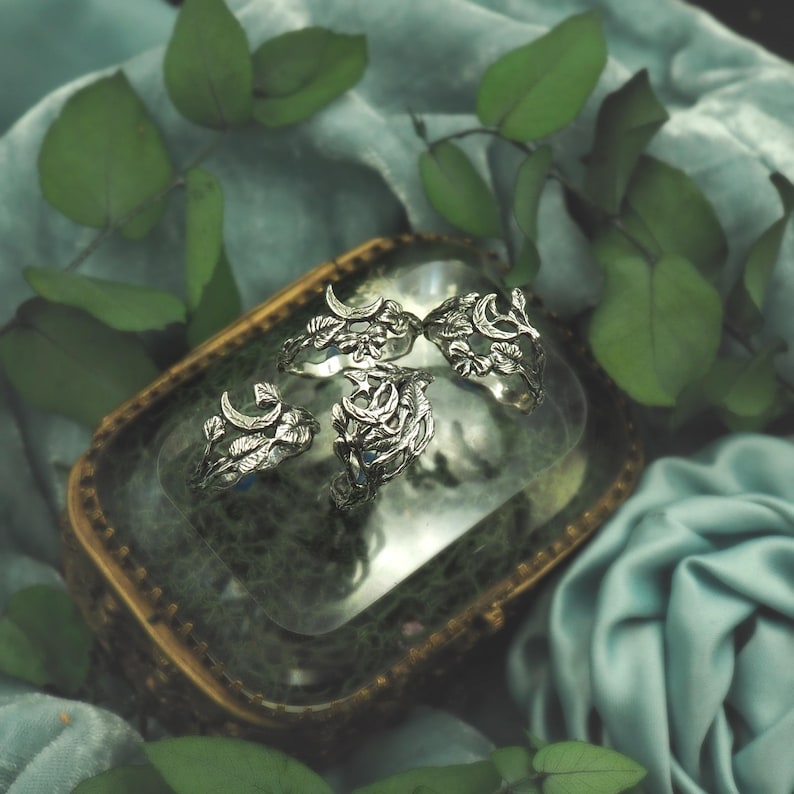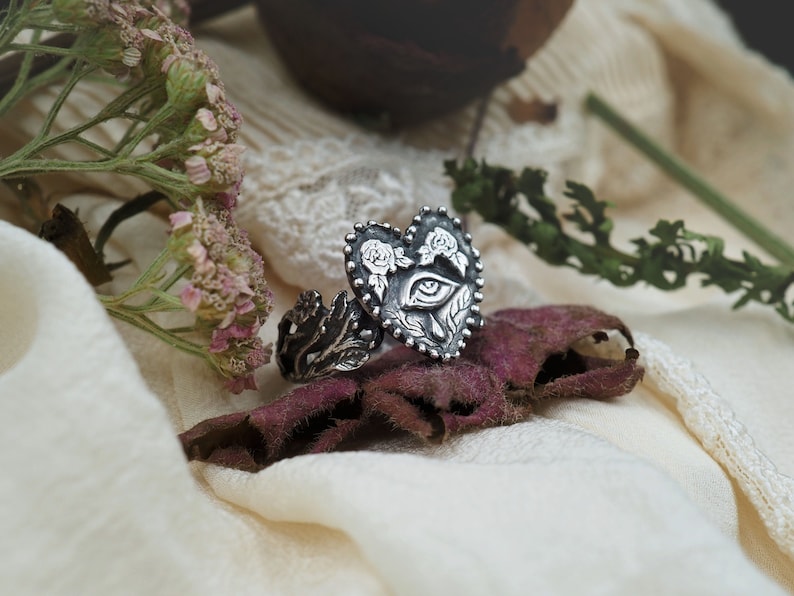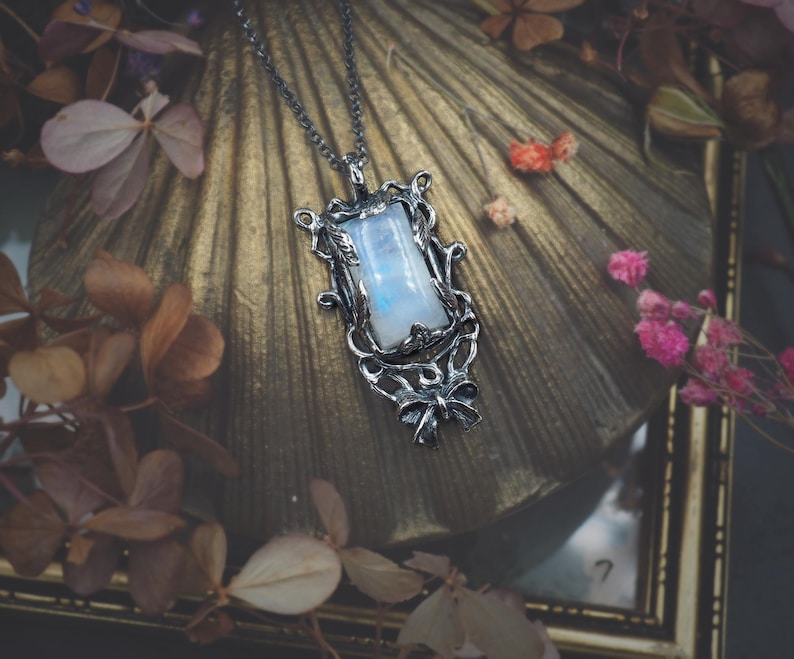b
Dark Botanical Jewelry from Dusky Meadow
Dusky Meadow is a handcrafted jewelry brand that takes inspiration from nature, history, and fairy tales. Unique and one of a kind, with a complicated yet raw look, Dominika’s pieces often incorporate images of butterflies and moths, vines and plants, toadstools, ribbon-like branches, moons, and mourning eyes. These wonderfully charming rings and necklaces are sinuous and fluid, but very ornate, like 19th-century household objects. The result is almost finicky, highly encrusted, at the same time having an unfinished naturalness and whimsical imprecision which gives a quality both ethereal and earthy to the pieces. Dominika’s influences range from Victorian accessories, anatomy, Eastern European folklore, Art Nouveau illustrations, to Gothic architecture and celestial bodies. I feel that moonstones are the perfect gem to set off her fantastical designs, and adore her imaginative envisioning of Baba Yaga’s hut with the stars and little gemstone moon in the sky behind it. The lavish creativity, whimsy, and preciousness of Dusky Meadow jewels make them some of the most coveted pieces I’ve lately laid my eyes upon.



